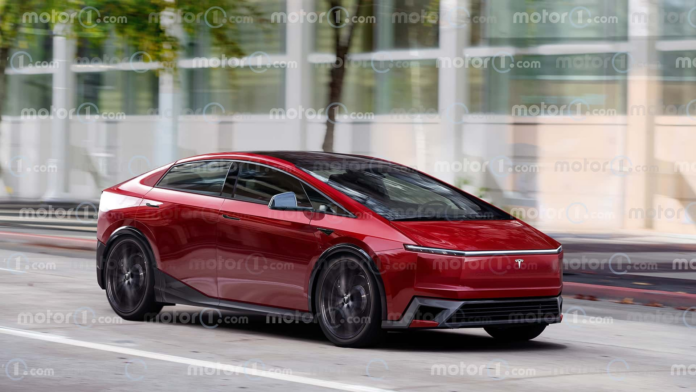Top key points of the article
- Tesla’s $25,000 mass-market EV is expected to have a futuristic design inspired by the Cybertruck, with many straight, flat surfaces.
- It will likely be a compact car with a driving range of up to 250 miles.
- It is expected to start production between 2024 and 2025, and will likely be made in China and Mexico, and possibly in India.
The introduction of a $25,000 EV from Tesla is a critical step for the company, aiming to make electric vehicles more accessible to the general public. The insights from Walter Isaacson’s biography of Elon Musk shed some light on what we might expect from this new model, especially in terms of design.
Inspired from Cybrertruck
The inspiration from the Cybertruck is evident. Tesla’s Cybertruck, with its radical design, has been polarizing. It’s characterized by straight, angular lines, which are not just for aesthetics but also serve functional purposes. Notably, the design helps reduce manufacturing complexities, thereby aiding Tesla in its goal to produce a more affordable vehicle.

Rendering
Regarding the rendering by Motor1.com Italy: The idea is that the “$25,000 Tesla EV” (or what some have dubbed the Model 2) will sport a design reminiscent of the Cybertruck. From the description, it seems the design maintains the Cybertruck’s simplistic, geometric aesthetic but in a compact form. Key features like the arched roof and flush door handles are consistent with Tesla’s known emphasis on aerodynamics, further hinting that performance and efficiency won’t be compromised.
My thoughts on the rendering: Translating the design language of a large vehicle like the Cybertruck onto a smaller canvas is a challenging task. If Motor1.com’s rendering is accurate, it seems they’ve managed to capture the essence of the Cybertruck’s design in a compact form. Such a design could appeal to those who appreciate the Cybertruck’s futuristic aesthetic but want it in a more city-friendly package.

However, there are potential concerns. The Cybertruck’s design, while unique, is also polarizing. A compact car with similar aesthetics might face the same love-it-or-hate-it reception. The absence of curves might make the car seem more rigid and less dynamic, which could be off-putting for some.
In terms of functionality, the straight and flat surfaces, if implemented as described, could help in cost-cutting for production and assembly. This might be a major advantage for Tesla as it tries to break into the mass market with a more affordable EV option.
Conclusion
In conclusion, whether the Cybertruck’s design language would work on a much smaller car depends largely on individual preferences. It’s bold and futuristic, which could resonate with a segment of buyers looking for something unique. On the other hand, the design might not appeal to everyone, especially those who prefer more traditional car designs. However, with Tesla’s history of breaking conventions, it wouldn’t be surprising to see them take the risk and introduce something genuinely distinctive in the compact EV segment.






































